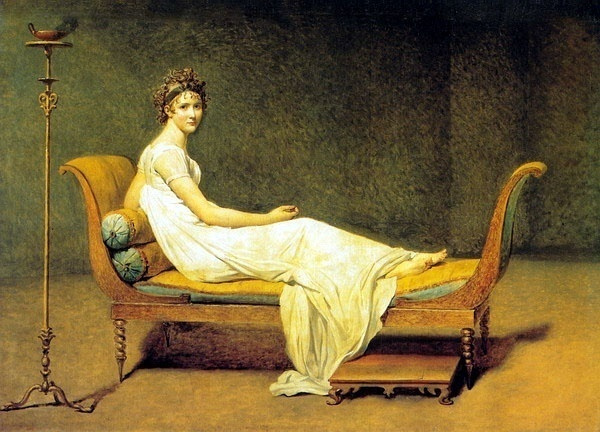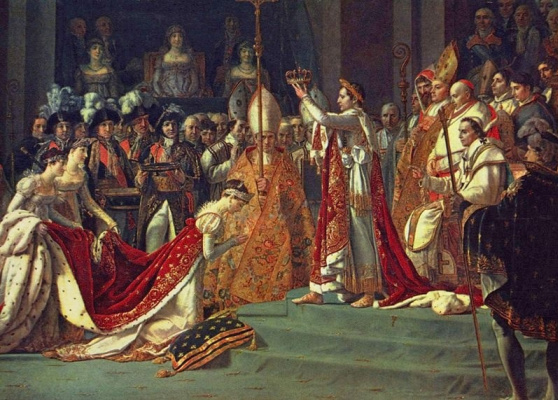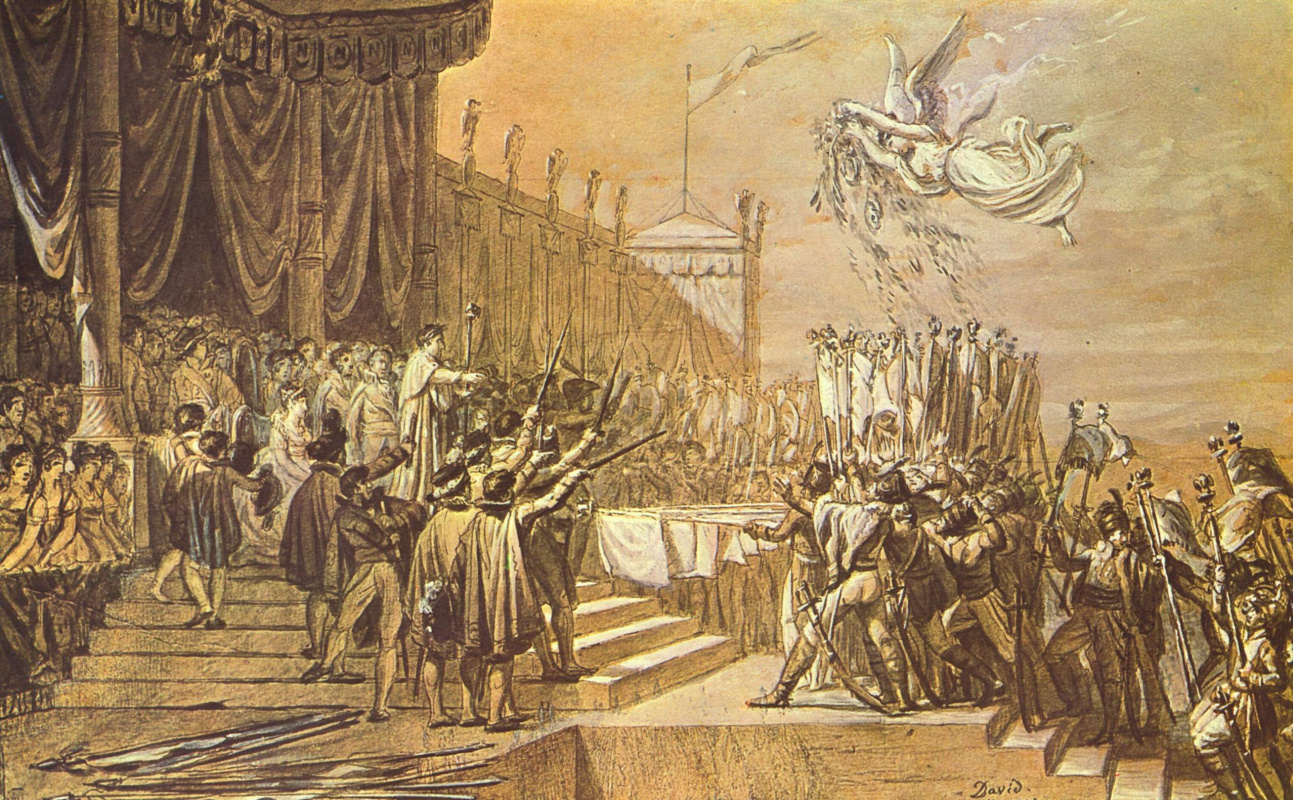It is characterized by the craving for monumentality and greatness: so that it immediately becomes clear to everyone that the emperor’s power is almost limitless! The Empire style arose in France during the reign of Napoleon, later it was replaced by the eclectic art movements currents and then itfound its revival in … the Soviet Union.

Where did it come from?
The Empire style was the final stage of classicism. Imposed by the state authorities, it was the official imperial style in architecture, painting, interior design when everything was to hail the emperor and the state he built, to remind of his strength. In other words, this is a cult of personality, frozen in sculpture and on canvases.It developed mostly in architecture and sculpture, but it also manifested itself in painting.
The style appeared in France during the era of Napoleon Bonaparte, and later it was propagated in all countries where the emperor had his military campaigns. It is interesting that it did not take root anywhere, except for Russia during the time of Alexander I. This is due to the elite’s craving for everything French. The emperor invited foreign architects to create palaces in the French style.
As a symbol of everything imperial, the style was later forgotten, and it returned in a reborn form of the 1940s under Stalin.
The typical subjects were battles, portraits of rulers in full uniform, often on horseback or during parades.

The signs of the Empire style in architecture are monumental massive columns, pilasters, stucco mouldings, military symbols in stucco details (armour, laurel wreaths, coats of arms), frequent use of ancient symbols (eagles, sphinxes, griffins, lion paws). All these are not chaotic, as on the Notre Dame Cathedral, the animals and symbols are built extremely symmetrically, according to all laws of geometry. This is the fundamental difference between the Empire and Gothic styles.

The signs of the Empire style in painting: imagine the paintings that can hang in such palaces and you will surely succeed. These are scenes of battles, portraits of the leaders and rulers in military uniforms or with swords, shields, on horseback — all that emphasizes the power of the empire, army and emperor. A woman in such portrait would look like a general’s wife (her pose, clothes, serious face), clothes imitate the style of the Roman Empire. Rigorous proportions, saturated, but restrained colours, a lot of red (the colour of the battle fire) are typical of the Empire style.
The Stalinist Empire style
It was the main direction in architecture, monumental and decorative art of the Soviet Union after the end of the World War II until the mid-50s. The classic examples are the Stalinist skyscrapers in Moscow or the Druzhba cinema in Kyiv: the powerful and monumental buildings feature stars at the tops.
The interior of such building usually contains massive carved furniture, high ceilings with stucco mouldings, bronze elements — a mixture of the Soviet Union and the Roman Empire. Monumentality plus luxury, pomposity, classicism with baroque elements.
The Stalinist Empire ended with the resolution of the Central Committee of the CPSU of 4 November 1955, "On the Elimination of excesses in design and construction".
You’re an expert, if:
You understand the difference between the Empire and the Stalinist empire: in the latter, the inculcation of the leader’s cult is clearly felt.You’re a layman, if:
You consider that the Empire style existed only in architecture. Indeed, there are more empire-style buildings than paintings, but initially the style originated in painting. Even before the revolution, Jacques-Louis David created the paintings Oath of the Horatii (1784) and The Lictors Bringing Brutus the Bodies of His Sons (1789), in which he glorified the heroic episodes of Roman history.David participated in the first French revolution. Later, he used his experience of working on Roman canvases to glorify the exploits of Napoleon, just as he did with the Roman emperors. They began to say about the artist that he had changed Caesar for Brutus.
Famous representatives of the style:
The painter Jacques-Louis David and the sculptors Auguste Dumont, Antoine-Denis Chaudet, Joseph Bové, Domenico Gilardi, Ivan Martos.
The famous artworks bin the Empire style:
— Jacques Louis David, Bonaparte crossing the Great St Bernard Pass, 1801, Château de Malmaison in Paris.— Jacques Louis David, Portrait of Madame Récamier, 1800, the Louvre Museum.
In architecture:
— Kazan Cathedral, St. Petersburg (built in 1801—1811), architect A. N. Voronikhin.
— Triumphal Gate, Moscow (built in 1829—1834), architect Joseph Bové.
— The Arc de Triomphe du Carrousel at the Place du Carrousel in Paris (built in 1806—1808 by order of Napoleon to perpetuate his victories). The Arc project was prepared by Charles Percier and Pierre Fontaine, inspired by the view of the Arch of Constantine in Rome.
Fine kettle of fish!
— Jacques-Louis David, the main painter of the Napoleonic time, brought elements of the Empire style to the secular portrait. He painted the famous Parisian beauty Madame Récamier in an antique-style tunic. This gave rise to the fashion a la Récamier.— The sculptor Chaudet made two statues of Bonaparte in the likeness of Caesar. One of them was installed on top of the Vendôme Column (the Parisian "Victory Column"), the second was brought by the Emperor to Moscow to install it in the conquered city.
— In general, the Empire style had a lot of imitation of Roman art, it began like that. For example, the Vendôme Column, imitating the Trajan column in Rome, is cast from remelted cannons taken from opponents — Russians and Austrians.















